Discover the Flamingo Flocks of Lake Manyara
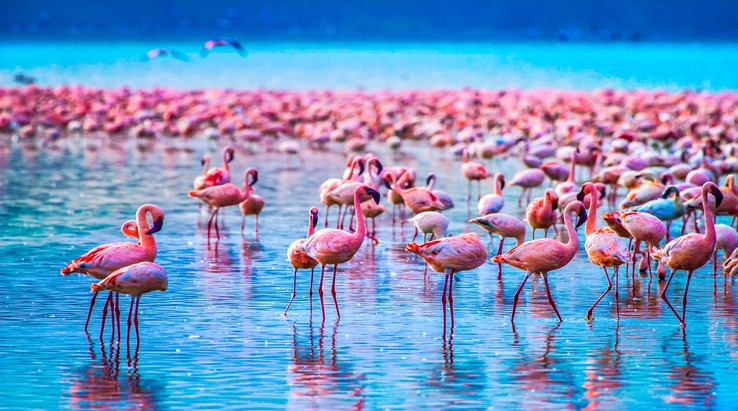
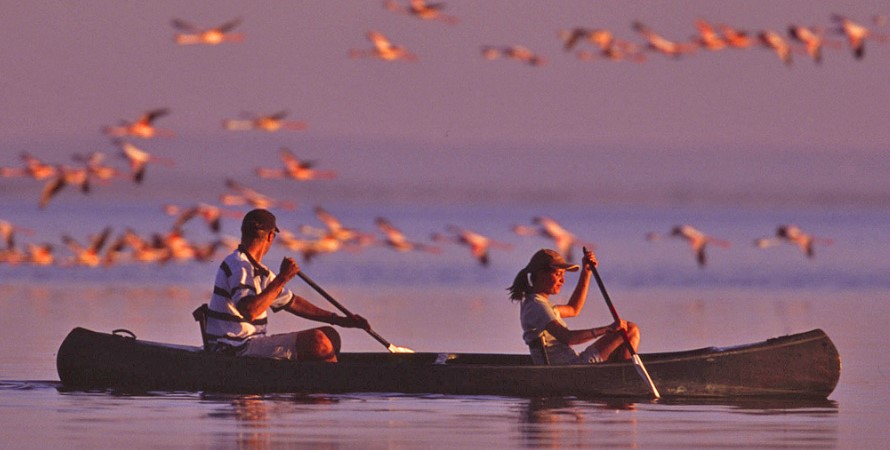
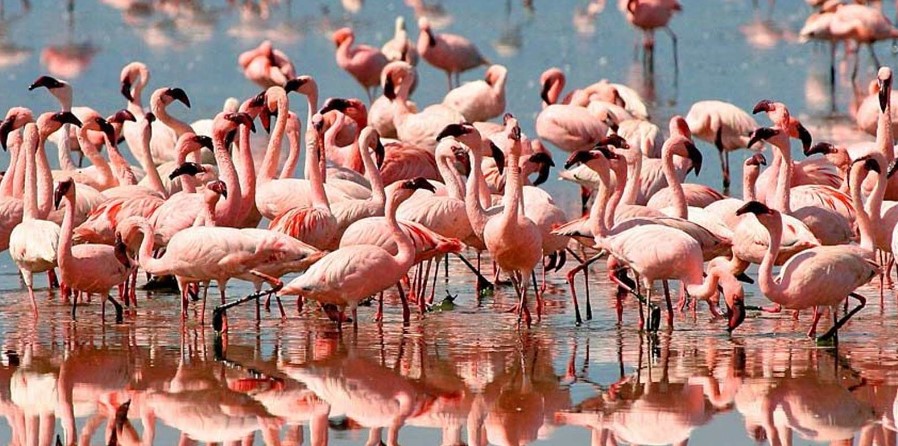
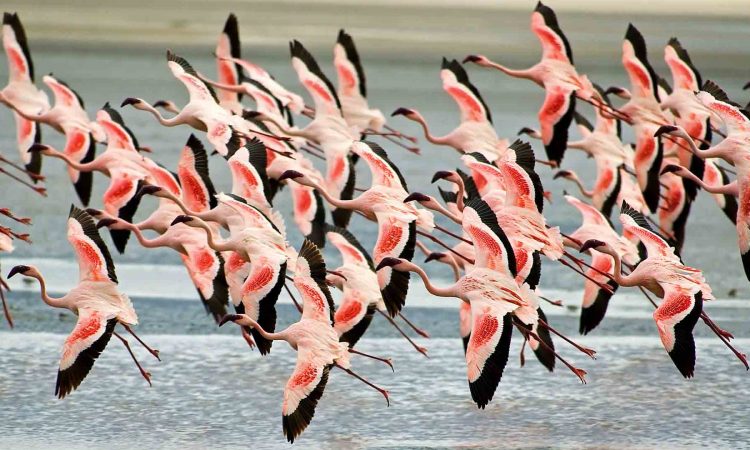
Introduction
Lake Manyara National Park in Tanzania is famous for its enchanting landscapes, unique wildlife, and especially its stunning flocks of flamingos. The sight of thousands of these graceful birds, painting the shores in shades of pink, is a truly breathtaking experience that attracts visitors from all over the world. In addition to its scenic beauty, Lake Manyara is a vital ecological sanctuary, supporting a rich diversity of bird species and acting as a crucial habitat for flamingos. Here’s everything you need to know about the wonders of Lake Manyara flamingos and the unique experiences awaiting visitors to this incredible park.
The Significance of Lake Manyara for Flamingos
Lake Manyara is a shallow, alkaline lake located within the Great Rift Valley, which stretches across East Africa. Alkaline lakes like Manyara are ideal breeding grounds for flamingos because they contain high levels of algae and tiny crustaceans that are the primary food sources for these birds. This nutrient-rich environment sustains large flocks of flamingos year-round, particularly during the wet season when the water levels rise and create more expansive feeding areas.
The lake provides a safe habitat for flamingos to feed, breed, and thrive, and it serves as a migratory stop for both greater and lesser flamingos. These flocks are part of a larger East African population that migrates between Lake Manyara, Lake Natron, and other nearby alkaline lakes in search of ideal feeding and nesting conditions.
Why Flamingos Flock to Lake Manyara
The lake’s high concentration of spirulina algae is the main attraction for flamingos. These algae give the flamingos their pink hue, as their bodies metabolize the pigments found in the algae. The alkaline water is inhospitable to many predators, making it an ideal feeding ground where flamingos can gather in large numbers without the threat of being hunted. Flamingos are also attracted to the shallow waters, where they can easily filter feed with their specialized beaks designed to sift through the water and capture tiny organisms.
Viewing the Flamingos of Lake Manyara
Seeing Lake Manyara’s flamingos is one of the most captivating spectacles in Tanzania. Visitors can witness vast pink flocks along the lake’s edges, a moving and colorful display that is especially stunning during sunrise and sunset. Watching these elegant birds from the shore or from designated viewpoints provides a serene and memorable experience.
Some tips for the best flamingo viewing experience:
- Season: The best time to see flamingos at Lake Manyara is during the wet season, from November to May, when the lake is full, and food sources are abundant. During this time, the flamingo flocks are largest, and the lake’s landscape is lush and vibrant.
- Time of Day: Early morning and late afternoon are ideal times to see flamingos in action. As the sun rises or sets, the warm light creates a mesmerizing reflection on the lake, making the pink hues of the flamingos even more vivid.
- Viewing Points: There are several viewpoints around Lake Manyara National Park that offer panoramic views of the lake and its resident flamingos. Manyara Tree Walkway and viewpoints along the park’s main road are popular spots where visitors can observe the flocks without disturbing their habitat.
Types of Flamingos at Lake Manyara
Two main types of flamingos can be found at Lake Manyara: lesser flamingos and greater flamingos.
- Lesser Flamingos: These smaller flamingos are known for their vibrant pink feathers, a result of their diet rich in algae. Lesser flamingos are particularly abundant and often seen in enormous flocks along the lake’s shores.
- Greater Flamingos: The greater flamingos are slightly larger and have a lighter pink hue. They have a more diverse diet, which includes small invertebrates along with algae. Although present in smaller numbers compared to lesser flamingos, greater flamingos are still a beautiful and graceful sight.
Together, these two types of flamingos create a stunning display of color and movement, which has made Lake Manyara famous among bird enthusiasts and nature photographers.
Other Birdlife in Lake Manyara National Park
In addition to flamingos, Lake Manyara is home to over 400 bird species, making it a paradise for birdwatchers. Some notable species include pelicans, storks, African spoonbills, and herons, all of which can be spotted along the lake’s edges and within its marshy surroundings. This diversity of birdlife, especially in the company of the magnificent flamingo flocks, makes Lake Manyara an ideal destination for birding safaris and nature photography.
The Ecological Importance of Flamingos at Lake Manyara
Flamingos play a crucial role in the ecosystem of Lake Manyara. By feeding on algae and tiny crustaceans, flamingos help control the lake’s ecosystem balance, keeping algae populations in check. This helps maintain a healthy environment for other bird species and contributes to the overall biodiversity of the area. Moreover, flamingos attract ecotourism, which in turn helps fund conservation efforts and promotes awareness about the importance of preserving Tanzania’s natural habitats.
Conservation Challenges and Efforts
While Lake Manyara is a haven for flamingos, the lake and its surrounding habitats face several conservation challenges:
- Fluctuating Water Levels: Climate change and unpredictable rainfall patterns can affect the water levels in Lake Manyara, impacting the availability of food for flamingos and other wildlife. During dry spells, the lake can shrink significantly, reducing feeding grounds for flamingos.
- Human Encroachment and Pollution: The growing human population around the park has led to increased demand for resources, including water and land, which can result in habitat degradation. Pollution from agriculture and nearby settlements also affects the lake’s water quality, impacting the food sources that flamingos rely on.
- Tourism Management: While tourism provides essential funding for conservation, it must be carefully managed to prevent disruption to the natural habitat of the flamingos. Sustainable tourism practices are promoted to ensure that visitors can enjoy the beauty of Lake Manyara without disturbing the flamingos or other wildlife.
To combat these challenges, Lake Manyara National Park has implemented conservation programs aimed at protecting the lake’s ecosystem and supporting sustainable tourism. Community engagement and eco-friendly initiatives also play a role in maintaining the health of the lake and its birdlife, ensuring that the flamingos and other wildlife can continue to thrive.
Experiencing Lake Manyara Flamingos Beyond the Park
Visitors interested in seeing more flamingos can explore the nearby Lake Natron, another significant flamingo habitat. While Lake Manyara offers excellent opportunities for flamingo viewing, Lake Natron is a primary breeding ground for lesser flamingos, providing a more remote and intimate flamingo-watching experience.
Combining a visit to Lake Manyara with Lake Natron gives visitors a deeper understanding of the life cycle and migratory patterns of flamingos in East Africa and offers a holistic experience of Tanzania’s vibrant birdlife.
Planning a Lake Manyara Flamingo Safari
For travelers who want to experience Lake Manyara’s flamingos up close, there are several tips to keep in mind when planning a visit:
- Choose a knowledgeable guide: Local guides and rangers know the best spots and times to view flamingos and can provide insights into the park’s ecology and flamingo behavior.
- Pack binoculars and a camera: To fully appreciate the beauty of Lake Manyara’s flamingos, binoculars are essential, especially for distant views of the flocks. A good camera with a zoom lens is also recommended for capturing detailed images of the flamingos in their natural habitat.
- Respect wildlife: Flamingos are sensitive to disturbances, so it’s important to keep a respectful distance and avoid making loud noises that could disrupt them.
Conclusion: Why You Should Discover the Flamingo Flocks of Lake Manyara
Visiting Lake Manyara to see its iconic flamingo flocks is a truly magical experience. The sight of thousands of flamingos creating a sea of pink against the backdrop of the Great Rift Valley is one of Tanzania’s most awe-inspiring spectacles. Beyond its beauty, Lake Manyara plays a vital role in conserving flamingo populations and supporting the biodiversity of the region. By experiencing this unique natural wonder, visitors gain a deeper appreciation for the delicate balance of ecosystems and the importance of preserving such habitats.
For anyone seeking an unforgettable African safari experience, discovering the flamingos of Lake Manyara National Park is an opportunity to witness the magic of nature while supporting efforts to protect Tanzania’s extraordinary wildlife heritage.

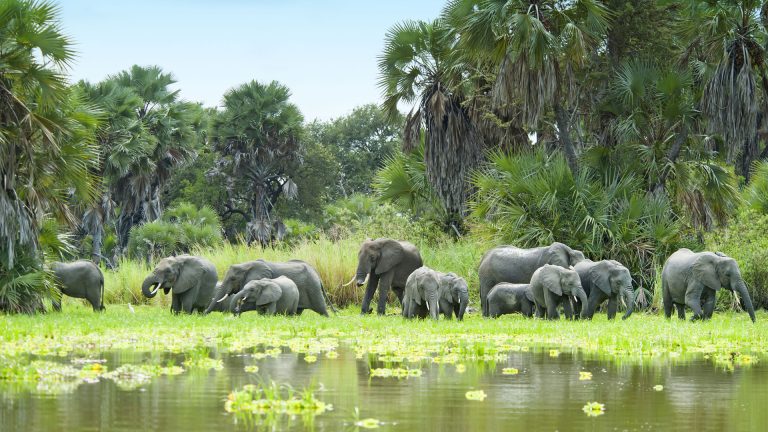
One Comment